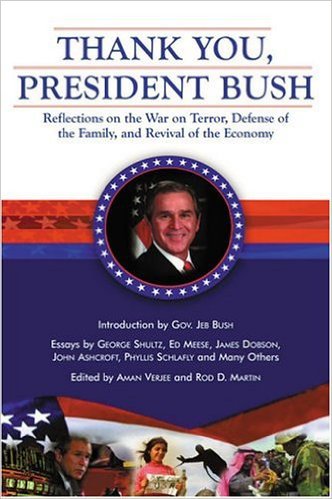Hunter Wallace
Occidental Dissent
March 26, 2016
The feud between Ted Cruz and Donald Trump over Heidi Cruz continues to escalate and “the beans” will probably drop before this article is published:
“DANE, Wis. — Donald Trump’s ability to roil the presidential race with a few swipes of a smartphone was revealed again in Wisconsin. Before a visit to a factory, Sen. Ted Cruz (R-Tex.) — the only Republican currently stumping here — had to field questions about the week’s second late-night Trump tweet that mocked the senator’s wife Heidi.
“Our spouses and our children are off bounds,” Cruz said. “It is not acceptable for a big, loud New York bully to attack my wife. It is not acceptable for him to make insults, to send nasty tweets — and I don’t know what he does late at night, but he tends to do these at about 11:30 at night, I assume when his fear is at the highest point.” …”
The PAC has no relationship to Cruz, but on Tuesday night, Trump warned that he would “spill the beans” about Heidi Cruz; on Wednesday night he retweeted someone who compared an unflattering photo of Mrs. Cruz to a glamorous one of Mrs. Trump. …
“It’s not easy to tick me off,” Cruz said. “I don’t get angry often. But you mess with my wife, you mess with my kids, that’ll do it every time. Donald, you’re a sniveling coward. Leave Heidi the hell alone.”
Ted knows what is coming and has already deployed his “how dare you attack my poor innocent wife, that’s so out of bounds” defense.
Heidi Cruz is the key to understanding the phoniness of Ted Cruz’s whole campaign. It is obvious to everyone why Trump married Melania – she’s a model, a clear “ten” – and a beautiful woman usually complements a rich and powerful man. Heidi Cruz, however, is Ted’s political and ideological soulmate. Unlike the Trumps, Ted and Heidi Cruz are a partnership like Bill and Hillary Clinton were in the 1990s.
The fact is, “Outsider Ted” met Heidi Cruz in 2000 while BOTH OF THEM were working as young policy wonks on the George W. Bush campaign. After George W. Bush became president, Ted and Heidi got married and BOTH OF THEM worked for W. in an official capacity on trade policy. Ted worked for the Federal Trade Commission while Heidi worked as a top deputy for U.S. Trade Representative Robert Zoellick.
In 2004, George W. Bush was running for reelection and a book was published defending his “agenda of compassionate conservatism” called “Thank You, President Bush: Reflections on the War on Terror, Defense of the Family, and Revival of the Economy.” You can buy a used copy on Amazon for 1 cent. BOTH Ted Cruz and Heidi Cruz penned essays in this book in which they defended George W. Bush’s policies. Ted’s essay, “The Rise of Opportunity Conservatism,” foreshadowed the theme of his Senate career.
Heidi Cruz wrote an essay in this book called “Expanding Opportunity Through Free Trade.” Once again, Heidi was chosen to defend George W. Bush’s free-trade agenda:
Globalist Heidi Cruz is a walking, talking embodiment of the NWO: pic.twitter.com/ZFSLFuly9j
— Hunter Wallace (@occdissent) March 23, 2016
At this point, it is already clear that Ted Cruz and Heidi Cruz are regarded as an EQUAL PARTNERSHIP within the George W. Bush administration. Indeed, Heidi has already leapfrogged from the Bush administration to Wall Street in no small part due to her former boss, Robert Zoellick, who moved on to Goldman Sachs, then later to President of the World Bank, and later still back to Goldman Sachs. Heidi, too, would soon join Zoellick at Goldman Sachs which she remained until Outsider Ted launched his presidential campaign.
In the essay, Heidi Cruz waxes forth about the “extraordinary” accomplishments of the Bush administration in implementing its free-trade agenda. She talks about how Robert Zoellick implemented the free-trade strategy “with no less than surgical precision”:
“The strategy consists of a few key ideas: making trade policy consistent with our values as a nation, selling the benefits of trade while helping people deal with the challenges of change, building coalitions for trade and creating leverage in negotiations to maximize the opening of markets around the globe, enforcing the rules of the global trading system and defending America when others don’t play fair, and using trade to improve standards of living around the world.”
The Zoellick free-trade strategy was to make American trade policy “consistent with our values.” And what are those values?
“In November 1999, President Bush outlined his foreign policy objectives in a speech given at the Ronald Reagan Presidential Library in Simi Valley, California. In that speech, he details the values America lives by: human freedom, democracy, free movement of people, capital and information mobility, optimism, dignity, and opportunity for all. Trade was at the center of how these values would be expressed in his Administration: “I view free trade as an important ally in what Ronald Reagan called ‘a forward strategy for freedom.’ The case for trade is not just monetary, but moral. Economic freedom creates habits of liberty. And habits of liberty create expectations of democracy.” Seattle lacked this connection to an overarching set of principles that would define what was good for the global trading system and what was in America’s interests.”
So, the “values America lives by” are the “free movement of people” and “capital and information mobility.” In other words, the free movement of labor and capital across national borders. Hold that thought.
Fastforward to 2005: an Independent Task Force releases a report sponsored by the Council on Foreign Relations called “Building a North American Community.”
Heidi Cruz is a member of the Independent Task Force and ENDORSES the report and its recommendations:
“I support the Task Force report and its recommendations aimed at building a safer and more prosperous North America. Economic prosperity and a world safe from terrorism and other security threats are no doubt inextricably linked. While governments play an invaluable role in both regards, we must emphasize the imperative that economic investment be led and perpetuated by the private sector. There is no force proven like the market for aligning incentives, sourcing capital, and producing results like financial markets and profit-making businesses. This is simply necessary to sustain a higher living standard for the poorest among us – truly the measure of our success. As such, investment funds and financing mechanisms should be deemed attractive instruments by those committing the capital and should only be developed in conjunction with market participants.”
Here are some highlights of the Council on Foreign Relations report endorsed by Heidi Cruz:
“To that end, the Task Force proposes the creation by 2010 of a North American community to enhance security, prosperity, and opportunity. We propose a community based on the principle affirmed in the March 2005 Joint Statement of the three leaders that ‘‘our security and prosperity are mutually dependent and complementary.’’ Its boundaries will be defined by a common external tariff and an outer security perimeter within which the movement of people, products, and capital will be legal, orderly, and safe. Its goal will be to guarantee a free, secure, just, and prosperous North America. …
Our economic focus should be on the creation of a common economic space that expands economic opportunities for all people in the region, a space in which trade, capital, and people flow freely. …
WHAT WE SHOULD DO BY 2010
• Lay the groundwork for the freer flow of people within North America. The three governments should commit themselves to the long-term goal of dramatically diminishing the need for the current intensity of the governments’ physical control of cross-border traffic, travel, and trade within North America. A long-term goal for a North American border action plan should be joint screening of travelers from third countries at their first point of entry into North America and the elimination of most controls over the temporary movement of these travelers within North America.” ..
To make the most of the impressive pool of skill and talent within North America, the three countries should look beyond the NAFTA visa system. The large volume of undocumented migrants from Mexico within the United States is an urgent matter for those two countries to address. A long-term goal should be to create a ‘‘North American preference’’—new rules that would make it much easier for employees to move and for employers to recruit across national boundaries within the continent. This would enhance North American competitiveness, increase productivity, contribute to Mexico’s development, and address one of the main outstanding issues on the Mexican-U.S. bilateral agenda.
Canada and the United States should consider eliminating restrictions on labor mobility altogether and work toward solutions that, in the long run, could enable the extension of full labor mobility to Mexico as well. …
WHAT WE SHOULD DO NOW
• Expand temporary migrant worker programs. Canada and the United States should expand programs for temporary labor migration from Mexico. For instance, Canada’s successful model for managing seasonal migration in the agricultural sector should be expanded to other sectors where Canadian producers face a shortage of workers and Mexico may have a surplus of workers with appropriate skills. Canadian and U.S. retirees living in Mexico should be granted working permits in certain fields, for instance as English teachers.
Move to full labor mobility between Canada and the United States. To make companies based in North America as competitive as possible in the global economy, Canada and the United States should consider eliminating all remaining barriers to the ability of their citizens to live and work in the other country. This free flow of people would offer an important advantage to employers in both countries by giving them rapid access to a larger pool of skilled labor, and would enhance the well-being of individuals in both countries by enabling them to move quickly to where their skills are needed. In the long term, the two countries should work to extend this policy to Mexico as well, though doing so will not be practical until wage differentials between Mexico and its two North American neighbors have diminished considerably.”
The ultimate goal of “Building a North American Community” here could not be more clear cut: dissolving the borders between the United States, Canada, and Mexico and integrating their capital and labor markets.
Fastforward to 2012: Ted Cruz bankrolls his Senate campaign with an undisclosed loan from Goldman Sachs.
“As Ted Cruz tells it, the story of how he financed his upstart campaign for the United States Senate four years ago is an endearing example of loyalty and shared sacrifice between a married couple.
“Sweetheart, I’d like us to liquidate our entire net worth, liquid net worth, and put it into the campaign,” he says he told his wife, Heidi, who readily agreed.
But the couple’s decision to pump more than $1 million into Mr. Cruz’s successful Tea Party-darling Senate bid in Texas was made easier by a large loan from Goldman Sachs, where Mrs. Cruz works. That loan was not disclosed in campaign finance reports.” …
A review of personal financial disclosures that Mr. Cruz filed later with the Senate does not find a liquidation of assets that would have accounted for all the money he spent on his campaign. What it does show, however, is that in the first half of 2012, Ted and Heidi Cruz obtained the low-interest loan from Goldman Sachs, as well as another one from Citibank. The loans totaled as much as $750,000 and eventually increased to a maximum of $1 million before being paid down later that year. There is no explanation of their purpose.
As Ted Cruz himself explains it, the decision to launch his Senate bid was a joint enterprise with Heidi. A week after Ted is elected to the US Senate, Heidi is promoted to a managing director at Goldman Sachs:
“About a week after Texans elected Mr. Cruz to the Senate in 2012, Goldman announced Mrs. Cruz’s elevation to its ranks of managing directors — a well-deserved promotion, colleagues said. …”
Fastforward to 2016: The New York Times reports that Ted has no more vital supporter than Heidi who is a partner who sacrificed her own ambitions to further his political career:
“Indeed, as Mr. Cruz emerges as a top contender in the Republican presidential field, there is no more vital supporter than his wife — the high-achieving partner who sacrificed her own ambitions, at considerable personal cost, to advance her husband’s.
“God leads you to where he can use you the most,” she said in an interview last week. “And it may not look exactly like you’d expect.”
Her background in finance has proved useful: Quite at ease asking for large sums of money, Mrs. Cruz makes as many as 10 calls a day seeking the maximum contribution couples can make to the campaign.
“The $10,800 contributions is my lane,” she said.”
Remind you of anyone? Yeah, Hillary.
Now Heidi spends her time handling the “10,800 contributions lane” for Outsider Ted’s campaign. She is using her Wall Street contacts to get the big donors to write huge checks. In February, Politico reported that 4 out of 6 top donors are financing Ted.
How unfair of Donald Trump to point out that Heidi Cruz is an EQUAL PARTNER who has always played a key role in furthering Ted’s political career! How unfair to point out that Ted is married to an open borders, free-trading globalist – who wants to merge the United States with Mexico – and who works for Goldman Sachs which conveniently financed Outsider Ted’s launch into the US Senate!
 Daily Stormer The Most Censored Publication in History
Daily Stormer The Most Censored Publication in History





